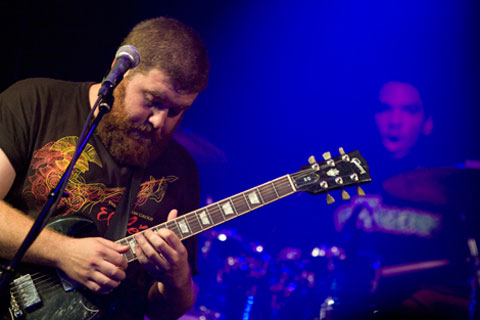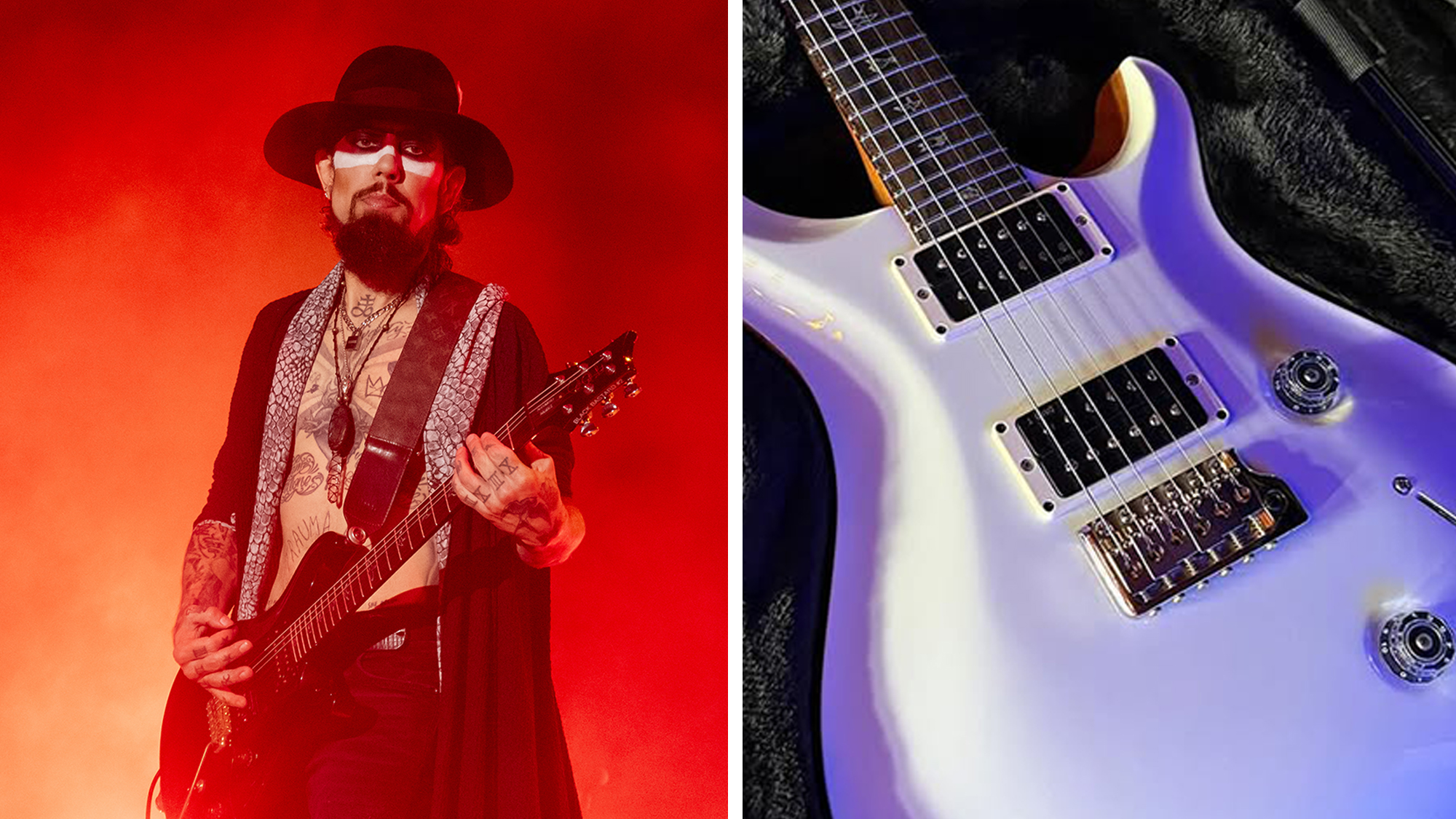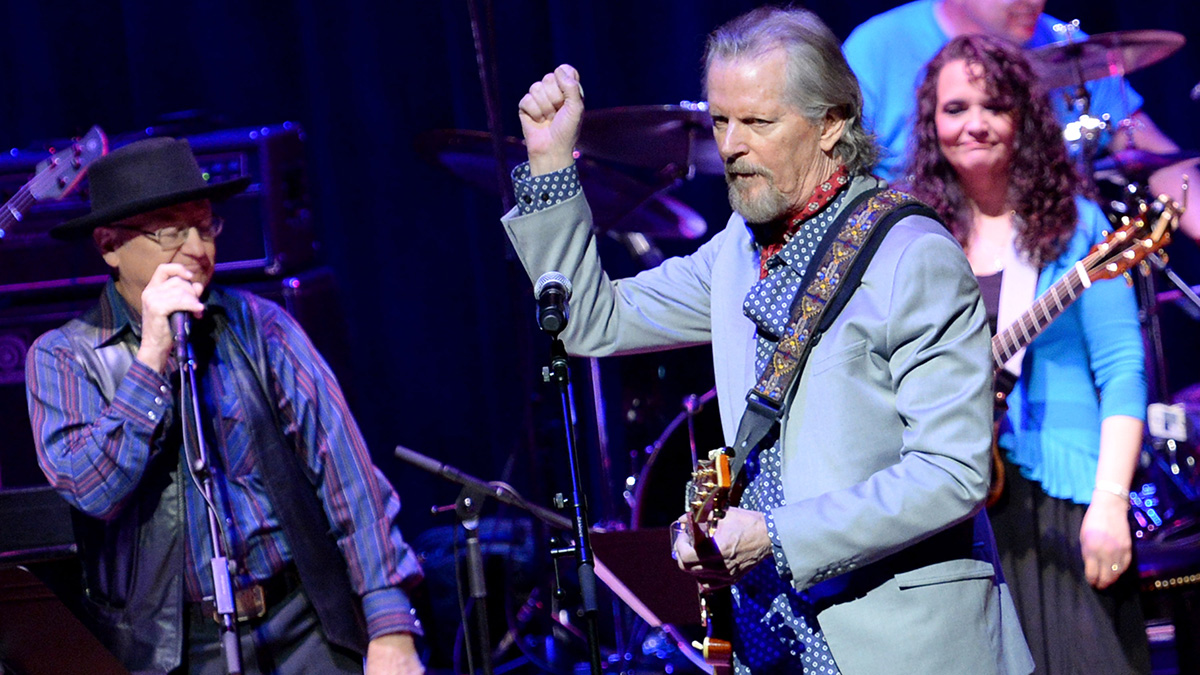Back Pedaling: Avoid Going Overboard with Effect Pedals

Some of the most innovative guitar playing in the world has involved pedals. Octave pedals, delays, wahs and phasers. Most of those groundbreaking sounds showed up in the late '60s, '70s and early '80s.
Players like Hendrix, Muddy Waters, Page, Clapton, Santana and George Harrison used pedals to flavor songs and styles, creating new sounds never heard before. Then the '80s came and went, and the world was introduced to hundreds of thousands of pedals, from boutique hand-wired analog ones to mass-manufactured Japanese digital replicas.
Spending the summer on this year's Vans 2011 Warped Tour and being the rig-spy that I am, I have witnessed almost every single type of tone and pedal board there is, as they go hand in hand. I have heard everything from digital compressed tones that filter through Pro Tools rigs to only tuners and combo amps, as natural as it gets.
I have seen pedal boards with literally 25-plus pedals on them, resembling mission control at a NASA building. This is where the thought came to me: When is it too many pedals -- or not enough?
Before I go any further, I understand that tone and pedals are all subjective. There is no right or wrong, only taste. I have seen large pedal rigs done right in bands like Middle Class Rut, The Expendables and The Bots. I have also heard the most organic tones on the tour from a band called Lucero and The Aggrolites, with stripped-down sounds relying mostly on the amps and guitars to do the work.
Tone, to me, is mostly in your fingers, and with your chops, the pedals are merely flavor. Sometimes the tone of amazing guitars, amps and players is masked by way too many pedals. Often, this is effected by people using the wrong pedals. Boutique doesn’t always mean good or road-worthy, and cheap usually dictates the sound.
To compare it to something, it would be like spicing a piece of meat before cooking it. If the piece of meat is the end result of overall tone for a song or set, then the best way to start would be plain. Add things as needed, but not as the first step. Start with the guitar, in tune, plugged directly into the amp head. Hone your chops on that, and work your way into adding pedals, or the spices.
Get The Pick Newsletter
All the latest guitar news, interviews, lessons, reviews, deals and more, direct to your inbox!
Usually the best meats are delicious with olive oil and sea salt, and the same applies to guitar. For me, usually the best players and most creative sounds use the fewest pedals. Using a delay and wah to see how many sounds you can get has always been my favorite approach before adding more pedals to get those sounds combined. Using the volume knob and pickup selectors for cleaner or dirty tones gives you more control than using a pedal, which could limit your options or completely drain your amp of the guitar's tone.
To players going through the mind-numbing process of pedal shopping and adding more to your board, start from scratch. Try starting with Fender or Gibson and a good tube head like an Orange or a Marshall. Turn it all the way up and just play.
See what you can accomplish from there. Then maybe add a delay. After some time with that, add an Octafuzz. Maybe even add a phaser, but keep it simple and embrace the fact that less is more. See how creative you can be with limited options. And remember that whatever you do, there’s always a place on the board for a wah-wah.
Nate Bergman is the guitarist/vocalist for Lionize, whose new album, Destruction Manual, is out now. You can purchase the album at iTunes here.
“Jimi was staying at a hotel in Times Square. He had his hair set in pink curlers and we would just talk band drama”: Electro-Harmonix founder Mike Matthews on befriending Hendrix, booking Chuck Berry and the birth of pedal culture
“Our answer to everything players have asked for and more”: Neural DSP’s Nano Cortex had one major drawback – but now it’s been addressed with a huge free firmware update that takes on Kemper and TONEX










